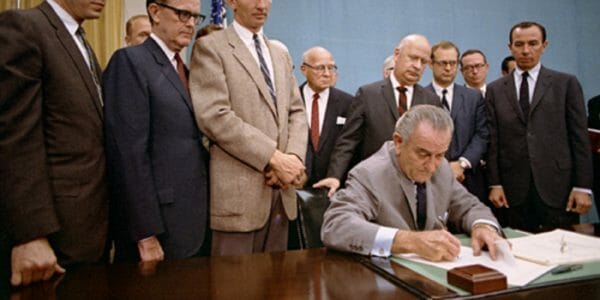
United States of America – -(AmmoLand.com)- Okay, folks, now we get to the next step after we have determined just what our present situation is. Our objective is simple: Securing our Second Amendment rights and a legacy of freedom for future generations. There is just one problem: Michael Bloomberg isn’t going to give up his dreams of disarming law-abiding gun owners without a fight. Dianne Feinstein will not stop pushing for the day she can say, “Mr. and Mrs. America, turn them all in” without fighting to the bitter end, either. Charles Schumer will not stop seeking to “hammer guns” with “relentless legislative strategy” and to deliver what HCI’s Richard Aborn once called the “rest of the camel” that followed the Brady Act on his own accord, either.
So, the question is how do we achieve that objective in the face of a fanatical drive to disarm us? Well, the answer, of course, is to fight back against Bloomberg. But we can’t just point to the Second Amendment and proclaim an end to the discussion. That isn’t going to work. Beating Bloomberg requires strategy and tactics – and all too often, Second Amendment supporters are not thinking tactically or strategically when it comes to protecting our rights.
Now, we’ve discussed the need to know your present situation. If you have a very favorable situation (significant pro-Second Amendment majorities in the legislature, a pro-Second Amendment governor), it may be worth it to push for major pro-Second Amendment legislation in your state. But you must be willing to adjust your tactics and strategy when the circumstances are not that favorable.
As Duane Liptak pointed out last week, history has shown that at times, you can’t stop anti-Second Amendment legislation from passing in some form. That said, smart tactics and strategy mean that you can render that anti-Second Amendment legislation much less intrusive than anti-Second Amendment politicians want. This was done with the National Firearms Act of 1934, the Gun Control Act 1968 (did you know Lyndon Baines Johnson wanted a licensing and registration scheme and denounced the “gun lobby” over not getting it?), and even the Brady Act in 1993.
Other times, you can kill legislation with poison pills. This approach does five things: First, it gives vulnerable pro-Second Amendment lawmakers cover to vote down the ripe-for-abuse versions of legislation proposed by anti-Second Amendment fanatics. Second, arguing over minutiae buys time to passions to fade – the worst forms of anti-Second Amendment legislation get rammed through in the heat of the moment, and sometimes, the debate over minutiae will kill any momentum for anti-Second Amendment legislation. Third, if something does pass, the damage is controlled. Fourth, sometimes, passing poison pills could prompt anti-Second Amendment extremists to just kill the bill. Fifth, sometimes, it gets anti-Second Amendment extremists to give the whole game away – and thus, their “reasonable” measures now are revealed as steps towards a gun ban, not good-faith efforts to address problems.
Guess what? It worked.
Remember what happened in 1999: In the wake of the Columbine shooting, some anti-Second Amendment extremists were seeing it as a chance for major legislation – and some even were looking to bans passed by England and Australia for inspiration. The NRA came up with its own version of gun show background check legislation that cut the delay for a NICS check at a gun show to 24 hours as opposed to the 72 hours that anti-Second Amendment extremists wanted.
There were claims it was a sellout then. However, the 72-hour delay that anti-Second Amendment extremists wanted would have killed gun shows altogether – which was the plan of Schumer and Frank Lautenberg all along. Gun shows are one of the places where Second Amendment supporters can meet other Second Amendment supporters, and learn they are not alone. The NRA’s tactics also got Bill Clinton to famously admit that he supported gun registration in an interview with Charlie Gibson.
When the NRA’s version was what passed the House, anti-Second Amendment extremists provided the bulk of the nay votes, and the bill was voted down. In the two decades since, gun shows have survived. Oh, and the push for gun control cost Al Gore West Virginia, Arkansas, and Tennessee in the 2000 election. Also, vulnerable pro-Second Amendment lawmakers could say they voted to address the problem, but unreasonable demands from extremists killed the legislation, and many returned to later cast votes that ended the threat of frivolous lawsuits from big-city mayors later on.
On the “red flag” laws, the NRA has been using the same strategy they used to stop Lautenberg’s effort to kill gun shows in 1999, this time by insisting on penalties for false or frivolous accusations and the protection of due process. Again, pro-Second Amendment lawmakers can say they support “red flag” laws, but that the Bloomberg version is unreasonable because it fails to protect due process, doesn’t mandate treatment for mental health issues, and contains no penalties for false accusations.
Another important part of good strategic and tactical thinking is to know when to fight given battles. There is a limited amount of time, so the fights you pick matter. Over the last two years, even as President Trump went forward with a regulatory ban on bump stocks, he has also appointed dozens of pro-Second Amendment judges – judges who have been confirmed to the bench by the Senate with life tenure. This will significantly shift the legal and political terrain on Second Amendment issues.
One other point to consider is that we will also be at the mercy of events, and choices made by anti-Second Amendment extremists. We need only to look at Andrew Cuomo’s decision to embrace the abuse of power against the NRA as one such thing. Events out of our control will force a change in strategy. It is a safe bet that a number of close state and federal races where anti-gun lawmakers won could have gone the other way if the NRA didn’t have to fight a legal battle against Cuomo’s abuses, but to ignore his efforts to blacklist the NRA would have been fatally short-sighted.
The fact is, we face a long road when it comes to ensuring our Second Amendment rights are secure. The push to punish the law-abiding for the horrific misuse of firearms will always be around. But the time and effort spent to secure our freedoms and pass them on to future generations will be spent more effectively with the right strategies and tactics for the circumstances we are in.

About Harold Hutchison
Writer Harold Hutchison has more than a dozen years of experience covering military affairs, international events, U.S. politics and Second Amendment issues. Harold was consulting senior editor at Soldier of Fortune magazine and is the author of the novel Strike Group Reagan. He has also written for the Daily Caller, National Review, Patriot Post, Strategypage.com, and other national websites.
